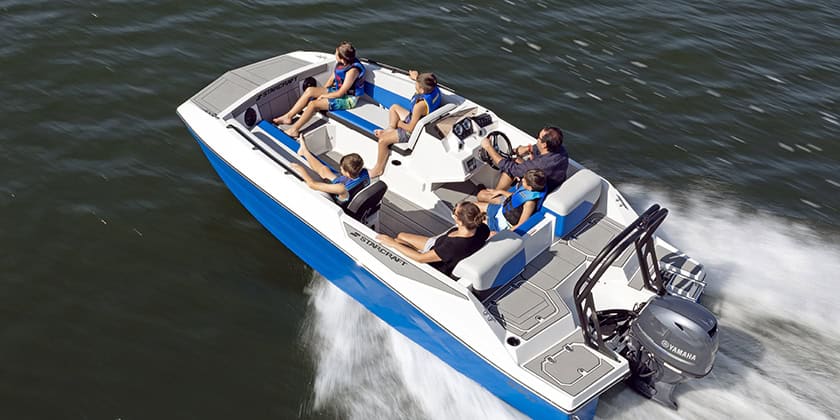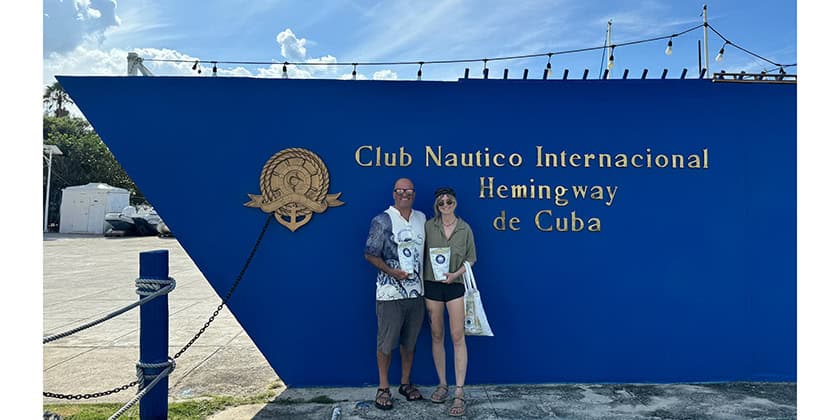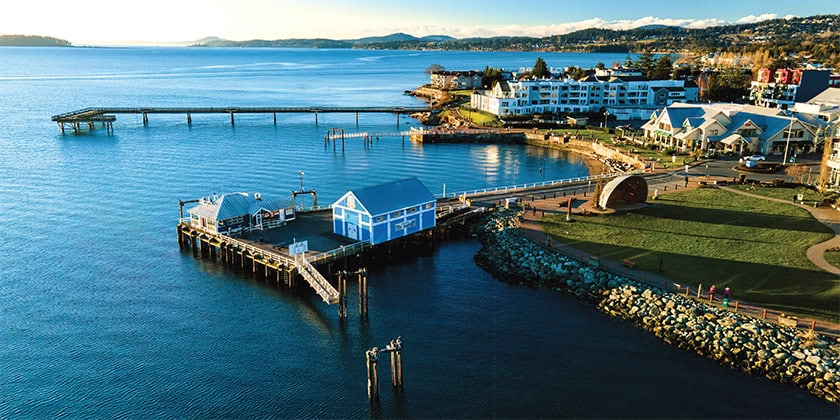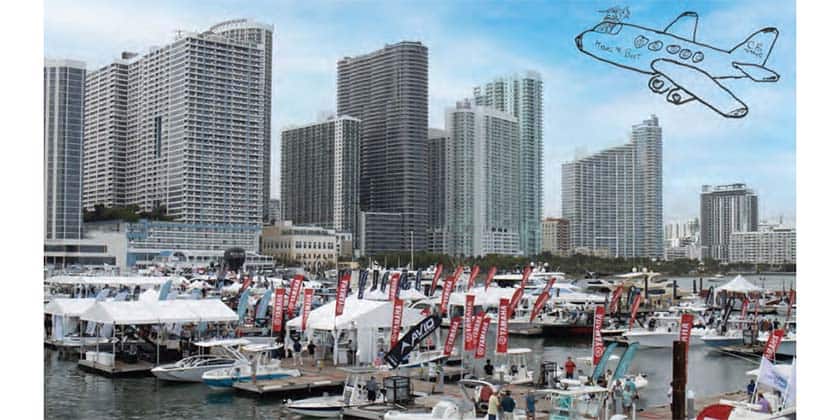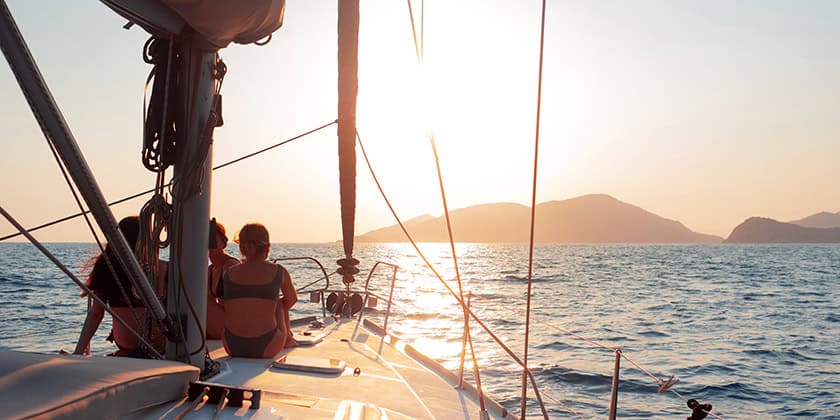Beneteau 361
By Heather Ormerod
I’ve heard the story a hundred times. Parents love sailing and buy a boat for family cruising. Kids love sailing on the boat, so the parents put them in sailing school. Kids become great sailors, but suddenly cruising is not cool anymore. They aren’t content to bob about on the solid, steady family cruiser any longer. They want something that ‘s exciting to sail, something that can go fast. Meanwhile, an aging mom and dad have gone the opposite direction. They begin wishing that sailing was a bit less work and their weekends onboard a bit more comfortable.
It ‘s a common scenario that usually ends in separate sailboats and on-water agendas for the young and the old. With two teenage sons that are teaching and racing, Farokh Pavri knows of which I speak, but he decided that when it came time to start looking for a new boat he was going to try to find a compromise. “If we were going to continue to sail as a family, we needed a boat that has some performance,” says Pavri. His extensive search for sailing and familial bliss came to a happy end when he discovered Beneteau’s new 361.
The 361, which was introduced this year, is similar to the earlier Beneteau 352, but in response to owner comments, Beneteau has made a few distinct changes. The 361 has a separate shower stall in its enormous head, more working area in the galley and the primary winches have been moved aft to the coamings, to put them in close reach of the helmsperson. Beneteau’s tried and true building methods remain the same, however. A grid system is fitted into the hull during the layup procedure to improve hull integrity and offer some extra resistance to structural damage should a grounding occur. Beneteau’s dominance of the charter boat market is a testament to its boats’ seaworthiness. The 361 does not deviate from this tradition; it is built and designed for cruising. Owners can sail into the sunset with the knowledge that there is likely to be a dealer close at hand wherever they wander and their hull is backed by a fiveyear transferable warranty.
Sit down, relax
The beam of the boat is carried all the way back to the transom, which means the cockpit is built for entertaining. There is plenty of seating in the cockpit. The teak drink holders, table and inlays in the cockpit benches add just enough rich wood texture to break the glare of the white gelcoat, without takin g away from the low-maintenance virtues of the exterior. Stern rail seats with drink holders are located in each of the aft corners, and because they are made from a smooth plastic material, they can double as small tables. Guests can lift up the helmsman ‘s seat and walk out through the transom for a swim or shower if they choose.
The helmsperson has a Plastimo Compass to guide him or her. Our test boat also had a Raytheon ST 4000 electronics package. These electronics are protected by a Plexiglass cover that flips up. With the standard main and jib furling and all lines led aft, single-handing is a safe and easy option.
There is a deep cockpit locker on t he portside of the boat that will appeal to anyone with off shore aspirations. It is huge. Perhaps even a little too deep for those who don’t have long arms, but there is a shelf to help keep things organised and a hydraulic hinge to keep the lid from bouncing around while you rifle through supplies. Besides, you can easily hop right in if you can’t reach. ln addition to this locker, there is a propane locker that holds two bottles.
Lewmar deck gear is used throughout – hatches, lead tracks and traveller. The two selftailing primary winches, which are also Lewmar, are located at the mid-point of the cockpit length and there is a secondary winch on the coach house roof. Spinlock stoppers are also standard equipment. Stainless steel grab rails run along the coach roof, and the side decks are wide enough to accommodate easy movement fore and aft. Overall the deck has clean, uncluttered look.
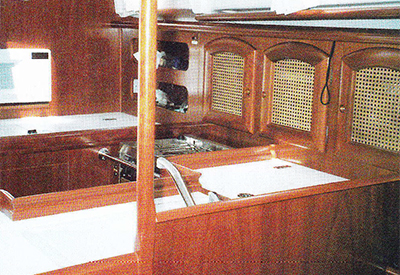 Just like home
Just like home
The cook for your crew will like the look of the galley. There is plenty of counter space in the U-shaped galley for food preparation. The deep aft counter forms a large square surface and houses the lid for the freezer. Just behind this counter there is a microwave embedded in bulkhead, and underneath, the fridge door swings open for front loading. The cane inserts in the fronts of two of the galley cabinets will be excellent for keeping dry goods dry. A storage area for canned goods and other supplies is located below another panel in the counter beside the sink. Cabinets under the sink and drawers on the end of the sink counter complete the list of storage spaces. A gimballed two-burner stove and oven and double sink with cutting board inserts are standard equipment.
Moulded fibreglass stairs lead down into a cabin warmed by cherry-stained mahogany. The finish is a rich shade wit h a bit of gloss, and lends a touch of elegance to t his practical cruiser. Ports, opening and fastened, are distributed along the length of the cabin, and there is an over head port directly in front of the clear opening hatch of the companion way, which extends a band of natural lighting well into the salon.
Cherry accent strips run lengthwise on the white headliner and there are also cherry grab rails. The oval salon table, situated to starboard of the centreline, has one flip-up panel and can be converted into a berth. The settees are deep and comfortable, and the usual storage areas are beneath. The forward-facing navigation station is directly in front of galley on the port side. There is a small storage bin beside the seat and the instrument panel here also houses the stereo.
The boat has only one head, but it is a biggie. Located directly across from the galley, the head has a separate shower compartment with a teak seat, a sink with good counter space and a toilet. Cherry accents, such as the grab rail/towel rack in front of the sink are an attractive, although impractical, addition to the head. There is only one door into the head, which mean s reduced privacy when guests are on board, but I have a feeling that many cruisers won ‘t mind when they see the space and amenities the layout offers.
Simple snoozing
Neither of the sleeping cabins are particularly luxurious, nor is there a substantial amount of storage space, but they are both practical and laid out in such a manner that they will be comfortable for those who use them for their main purpose – a place for sleeping. In the forward cabin there i s full standing headroom. The bunk is situated fairly low, which reduces the amount of storage space underneath, but opens up the cabin itself. There is a hanging locker on the starboard side with a quick – stash cubby hole below and a shelf runs along the hull. Natural light enters the cabin through an overhead opening hatch and two opening portholes.
The aft cabin is similarly styled. The wide bunk will sleep two very comfortably and there is a modest hanging locker for storage. The majority of the bunk lies underneath the cockpit floor, so it has the close and somewhat dark appearance of traditional aft cabins, but a good deal of natural light and ventilation in the standing area immediately in front of the bunk makes the best of the small space.
Back up on deck, we decide it is time to start sailing and do so within a few minutes. With both jib and main furling units, you can truly pull the sails out and go. There was probably about 10 to 12 knot s of wind for our test sail, and that drove us up wind at a bout 5.5 to 6.0 knots. A l though we didn’t have conditions that really tested the stiffness of the boat, those who have been on board in stronger winds report that they have tried unsuccessfully to bury the toerail and that the boat is very forgiving – reassuring in formation for novice sailors and those planning offshore ad ventures. The boat feels quite lively in the light breeze and points fairly well.
There is a good line of vision from the helm position and plenty of room in the cockpit for both working crew and passengers. Headroom, in particular, is in abundance, because the boom is quite high. This will comfortably allow for the addition of a dodger and bimini. Bearing off to a beam reach in about seven knots, the boat speed was in the 3.5 to 3.7-knot range.
The helm feels well-balanced and quite responsive. Once we decided to head back to the dock, our helms person did a tight U-turn, and the boat spun around quickly and easily. Under power, the boat is also simple to handle. Our test boat was located in a tight slip, but manoeuvring in and out was not a problem with the Yanmar three cylinder, 27-horsepower engine.
The basic package is available for $169,280. It should have more than enough toys to keep you happily afloat as is. The only extras you might want to add are an autopilot, dodger, bimini and, perhaps, a windlass.
Like so many other customers, Pavri has future plans to do some cruising in the south with his new boat, but for now he is happy enough to cruise Lake Ontario, picking up a few sailing tips from his boys and enjoying family cruising at it s best.
Originally published in Canadian Yachting’s Summer 1999 issue.
Specifications:
L.O.A. 36′ 5″
L.W.L 31′ 1”
Beam 12′ 6″
Displacement 12,790 lb.
Draft 5′ 0″










